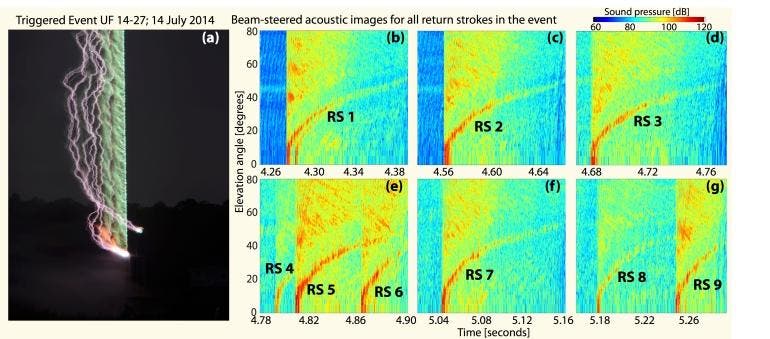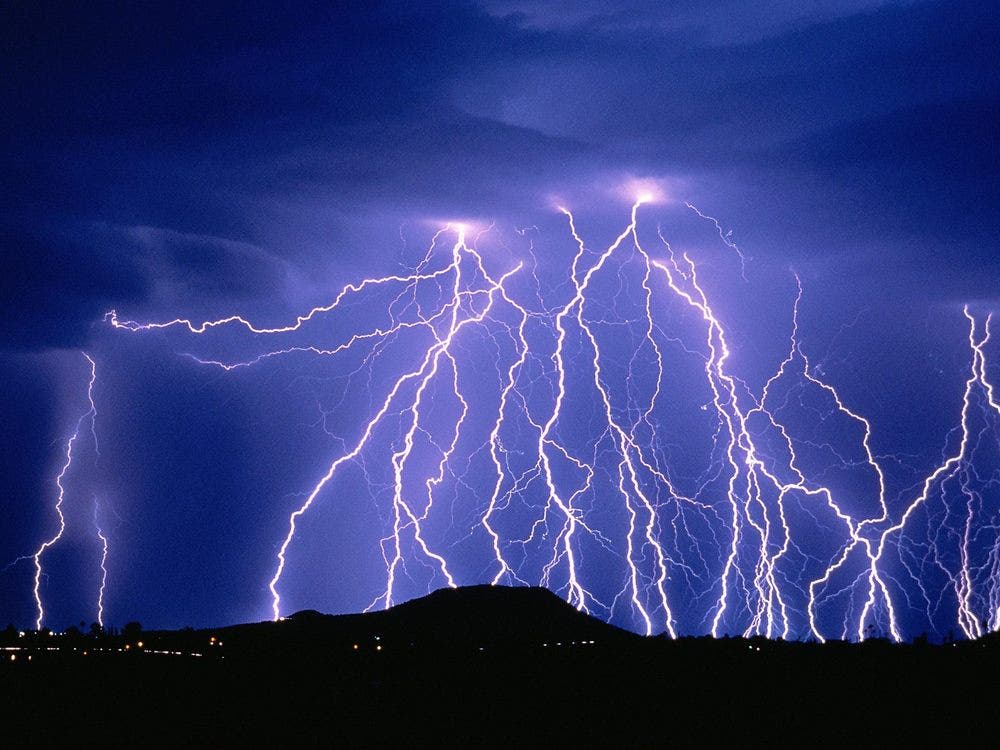What does lightning sound like? Thunder. Well, what does thunder look like then? It’s no trick question. Like all acoustic waves, thunder can also be visualized and Maher Dayeh from the Southwest Research Institute in San Antonio was the first to turn a thunderclap into an image. His findings were shown at a meeting of the American Geophysical Union.
Every day, some four million lightning strikes hit the surface of the planet. Despite this, how lightning, and subsequently thunder, is formed is not completely understood at a physical level. We know one thing for sure: it comes from clouds (dust, water and ice). Ice inside the cloud rubs against each other becoming electrically polarized or charged (the exact mechanism is a bit fuzzy, which is why the whole thing is debatable). The lighter ice will move upwards, while the heavier ice will stay below separating the negative and positive charges. Just like the cloud, because there’s a lot of charge hovering around, the air below the clouds also become ionized. In turn, the ionized air charges air particle further below in a cascading effect until it eventually reaches the ground. This happens very quickly, and the sections of ionized air look very much like electrical sparks or the static electricity released when you rub your sweater against a balloon. The ground is very conductive compared to air, and will give up a large amount of electric charge into this completed circuit (between the ground and the cloud) that causes a lot of charge to flow from the ground upwards to the cloud (this is called the return stroke and is basically what you see as lightning). This ionizes the air completely between the ground and the cloud, and this is the part you can see for miles around.

Left: long exposure photo of lightning event with downstream in green, and return stroke in purple. Right: audio signature for each return stroke. Image: Nature
As for thunder, because the ionization of air described above happens so quickly over a large area, it causes air to move (acoustic pressure) just like a sonic boom or explosion. Now, this sound has been recorded and visualized using processing algorithms by researchers at Southwest Research Institute in Antonio, Texas. Dayeh and team first went to a military installation in Florida, then installed a launch system which would shoot a rocket with a long copper wire trailing behind. The rocket was fired into a thundercloud. Then, it was only a matter of waiting for the rocket to trigger the lightning strike and profit. The lightning traveled down the wire and eventually hit the launch platform which was surrounded 15 microphones spaced 1 meter apart. This helped build an acoustic map, which looks like a contemporary painting. In fact, Dayeh and crew were so stoked by the results they thought they had done something wrong.
“The initial constructed images looked like a colourful piece of modern art that you could hang over your fireplace. But you couldn’t see the detailed sound signature of lightning in the acoustic data,” Dr Dayeh said.
The map also provided a few insights into thunder formation, like the fact that thunderclap depends on the peak electric current flowing through the lightning bolt. [source: Nature]











